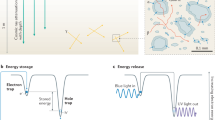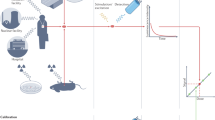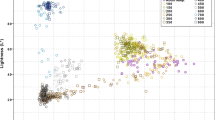Abstract
THERMOLUMINESCENCE (TL) of fossil bones and of various kinds of recent biological material has been reported by Jasińska and Niewiadomski1, who suggest that such materials could be used for dating purposes, but draw attention to difficulties which arise due to tribothermoluminescence (TTL, which is thermoluminescence derived from the mechanical energy of grinding) and to chemiluminescence (CL) associated with residual organic material.
This is a preview of subscription content, access via your institution
Access options
Subscribe to this journal
Receive 51 print issues and online access
$199.00 per year
only $3.90 per issue
Buy this article
- Purchase on Springer Link
- Instant access to full article PDF
Prices may be subject to local taxes which are calculated during checkout
Similar content being viewed by others
References
Jasińska, M., and Niewiadomski, T., Nature, 227, 1159 (1970).
Williams, J. B., and Irvine, J. W., jun., Science, 119, 771 (1954).
McDougall, D. J. (ed.), Thermoluminescence of Geological Materials (Academic Press, New York, 1968).
Author information
Authors and Affiliations
Rights and permissions
About this article
Cite this article
CHRISTODOULIDES, C., FREMLIN, J. Thermoluminescence of Biological Materials. Nature 232, 257–258 (1971). https://doi.org/10.1038/232257a0
Received:
Issue Date:
DOI: https://doi.org/10.1038/232257a0
This article is cited by
-
Spurious thermoluminescence characteristics of the Ediacaran Doushantuo Formation (ca. 635–551 Ma) and its implications for marine dissolved organic carbon reservoir
Journal of Earth Science (2015)
-
An analysis of paramagnetic centers in irradiated dentin using electron spin resonance
Calcified Tissue International (1990)
-
Thermoluminescence reveals weathering stages in basaltic rocks
Nature (1982)
Comments
By submitting a comment you agree to abide by our Terms and Community Guidelines. If you find something abusive or that does not comply with our terms or guidelines please flag it as inappropriate.



